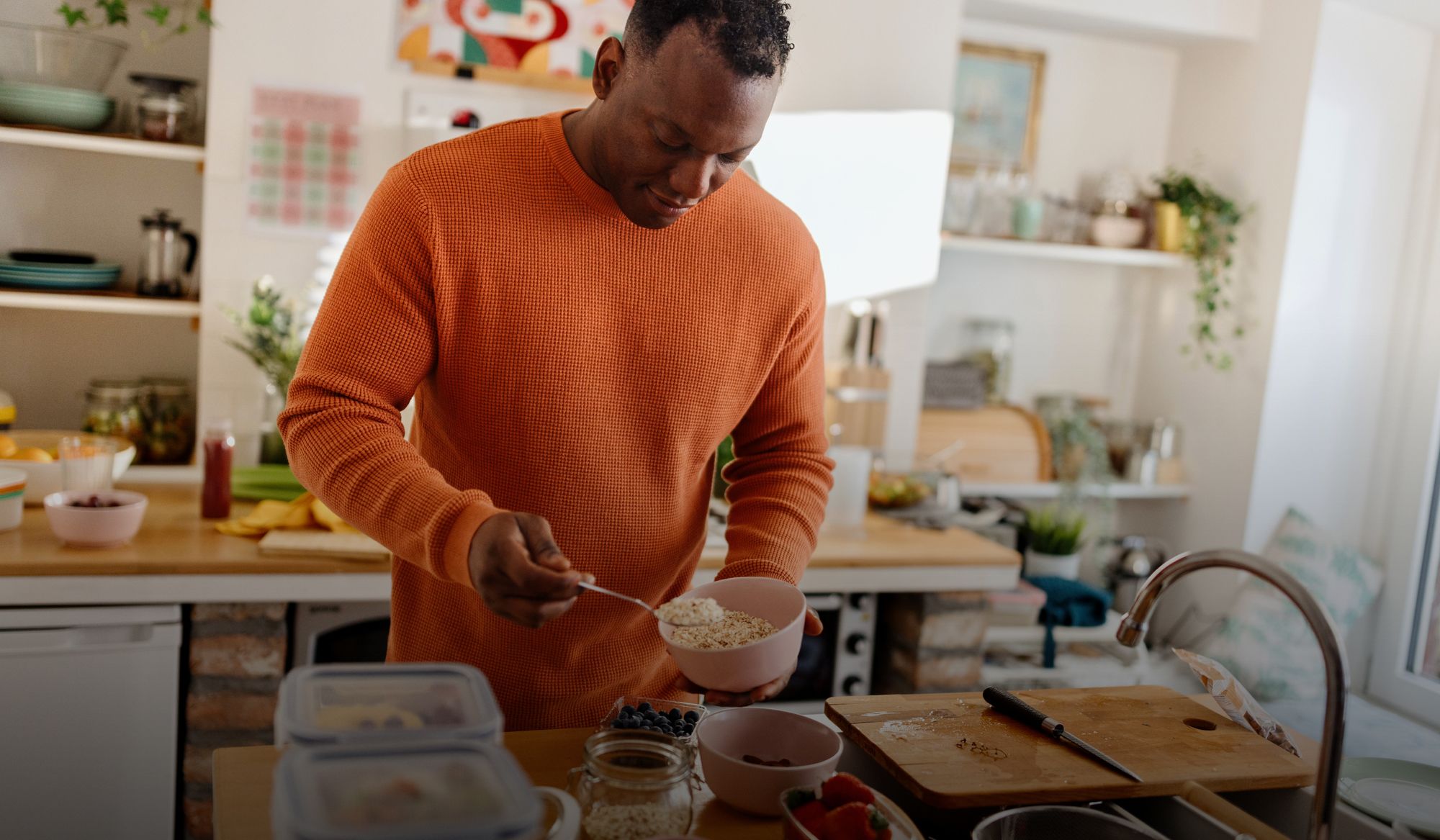Regardless of any beliefs readers may have about the health benefits of oatmeal or lack thereof, it serves as a great teaching tool for the benefits of experimentation with a continuous glucose monitor (CGM) and ways to better control your glucose levels.
Oatmeal is seemingly ubiquitous as well as popular at the breakfast table. Similarly, many CGM users find that they decide to not eat oatmeal anymore because of the glucose rush it causes, though this may actually not be an issue.
There are of course many ways in which glucose rush could be limited or even completely avoided, that said, some are more practical than others when it comes to a breakfast food. Likewise, adding extra physical activity (probably the easiest way) may not be ideal or possible for some people.
As a result, some of the Supersapiens team were issued the challenge to create their best oatmeal recipe to limit their glucose rushes.
The rules were:
- Must be a food recipe (no exercise pre or post meal to help blunt the rush)
- Same time of day
- Day 1 is the baseline (no attempt to limit rushes) and then as many days following as desired get their best recipe to limit the rush were allowed
The Results
Andrea (Data Scientist)
Andrea, being part of the science team already had a head start on knowing how to manage his glucose rushes.
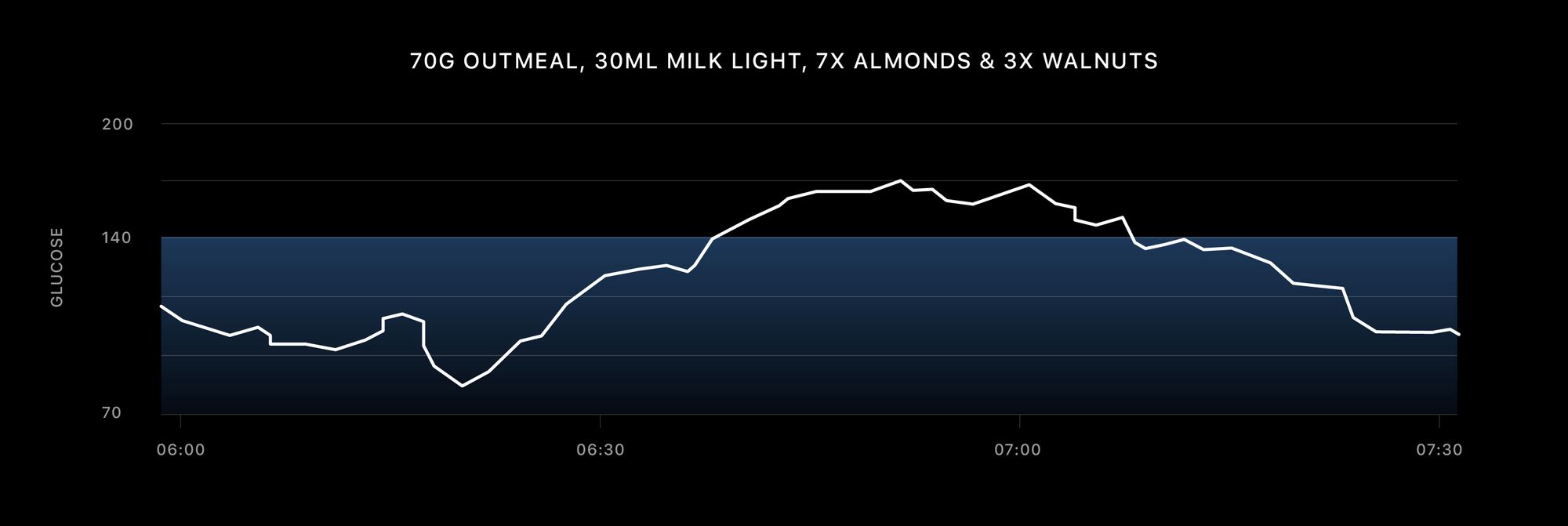
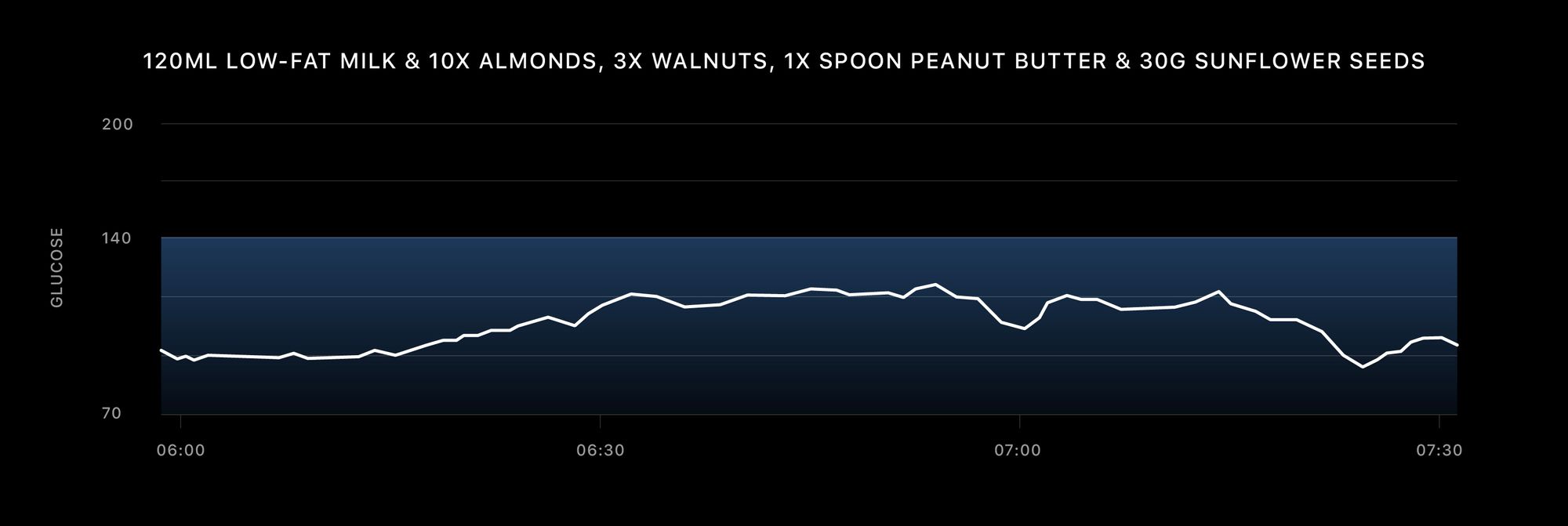
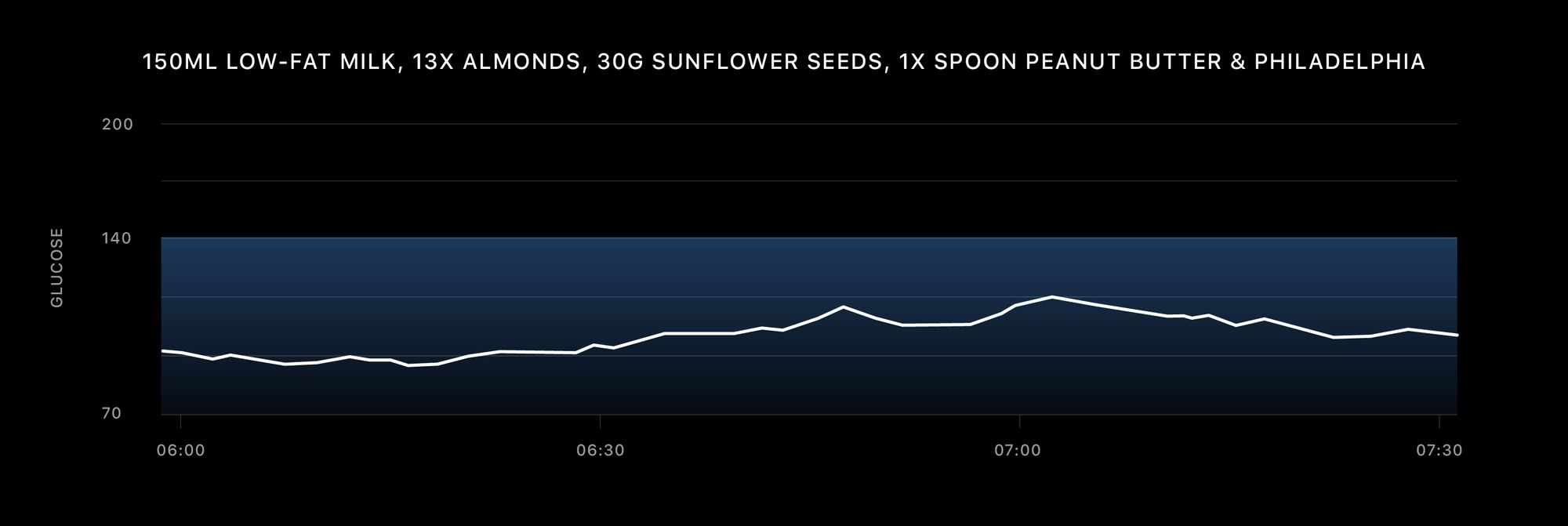
Andrea’s starting recipe was relatively glucose stable given the addition of fat, protein and fiber from nuts. That said, he goes on to increase fiber, fat and protein further through different methods as you can see from the notes section as well as his macronutrient breakdowns. It should be noted that he increased the carbohydrate content of this meal at the same time, though the ratio of carbohydrates to fat and to protein changed.
Jared (SVP of Finance & Operations)
Jared didn't quite start out with the same head start that Andrea had with respect to initially fairly stable glucose.
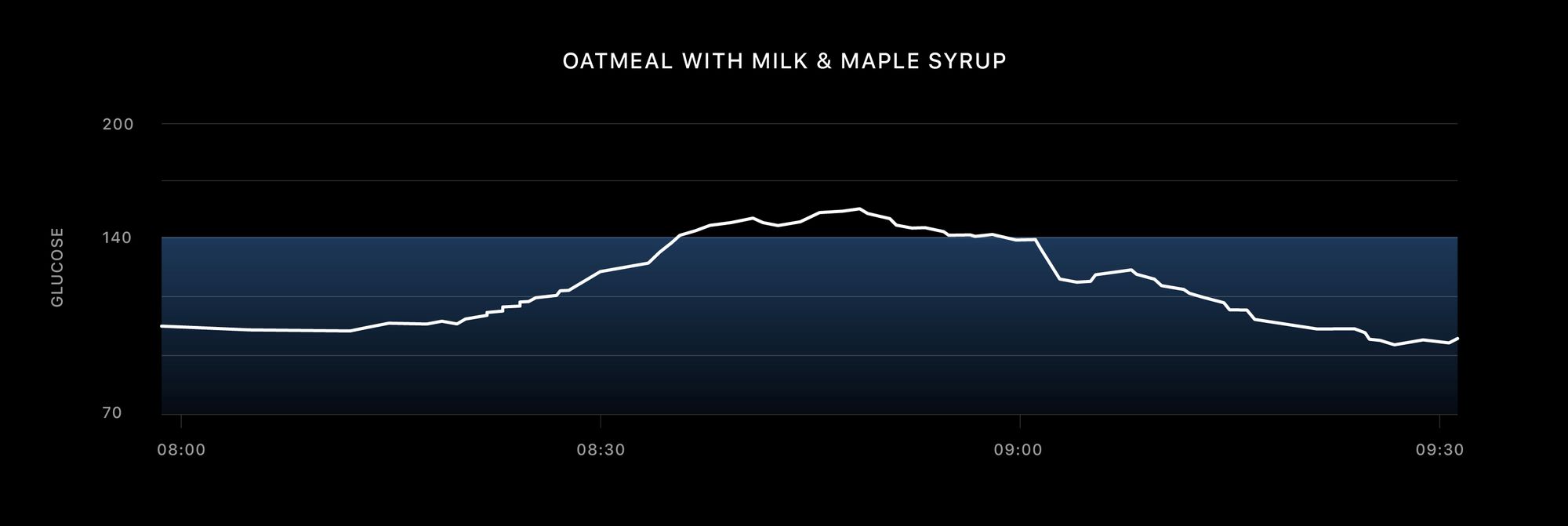
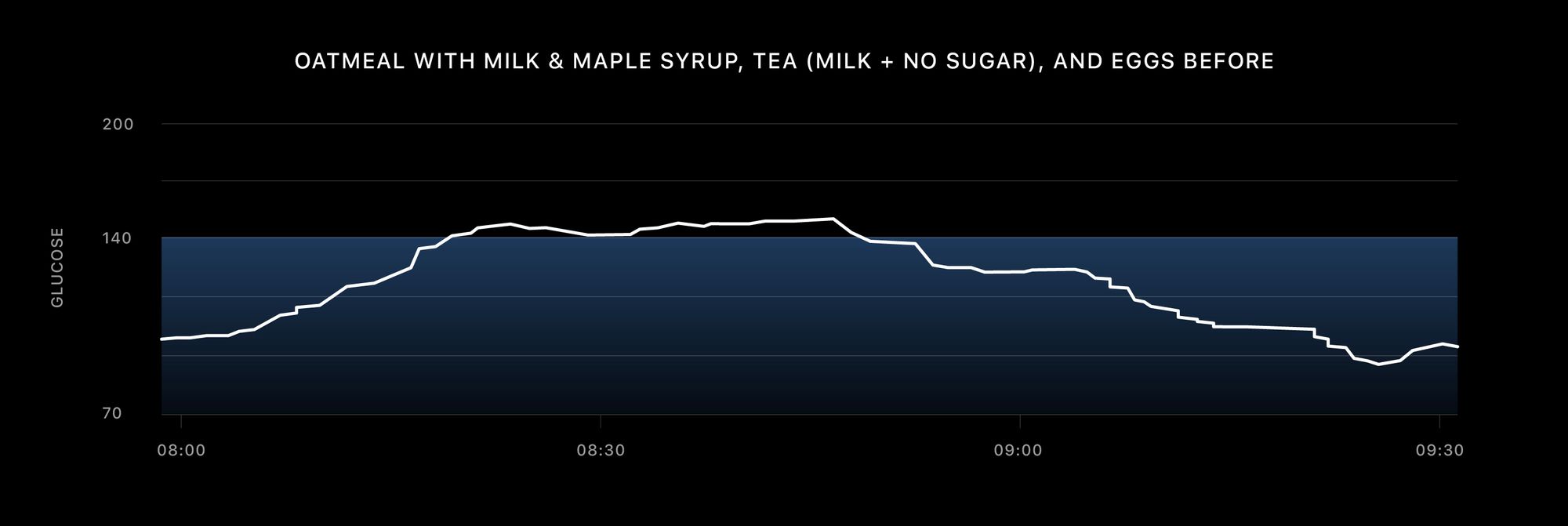
The eggs Jared had preceding his oatmeal have helped to smooth out his glucose quite a bit. That said, he still had a rush in glucose. Interestingly, but not surprisingly, the 'area under the curve' (duration of glucose elevation and amount of it) may have been worse in his second recipe.
Brian (Director of Digital Marketing)
Whilst Brian doesn't display a large rush from his oatmeal, you will notice he experiences a period of low glucose following this, usually a sign of good insulin sensitivity and a higher carbohydrate meal.
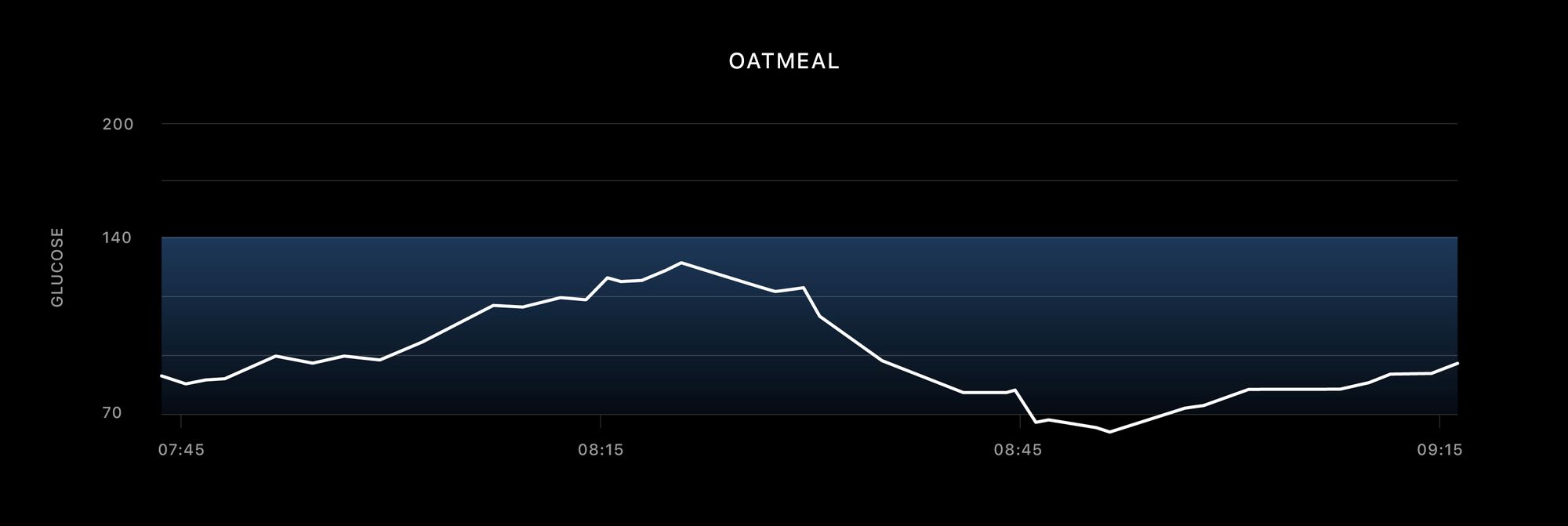
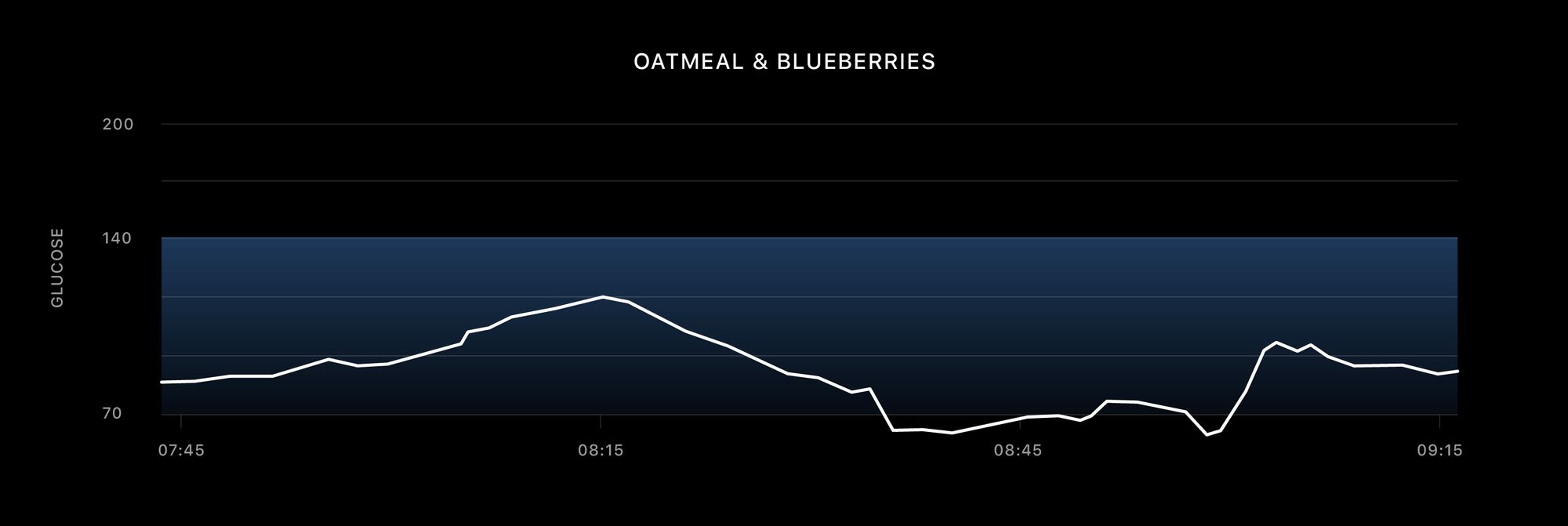
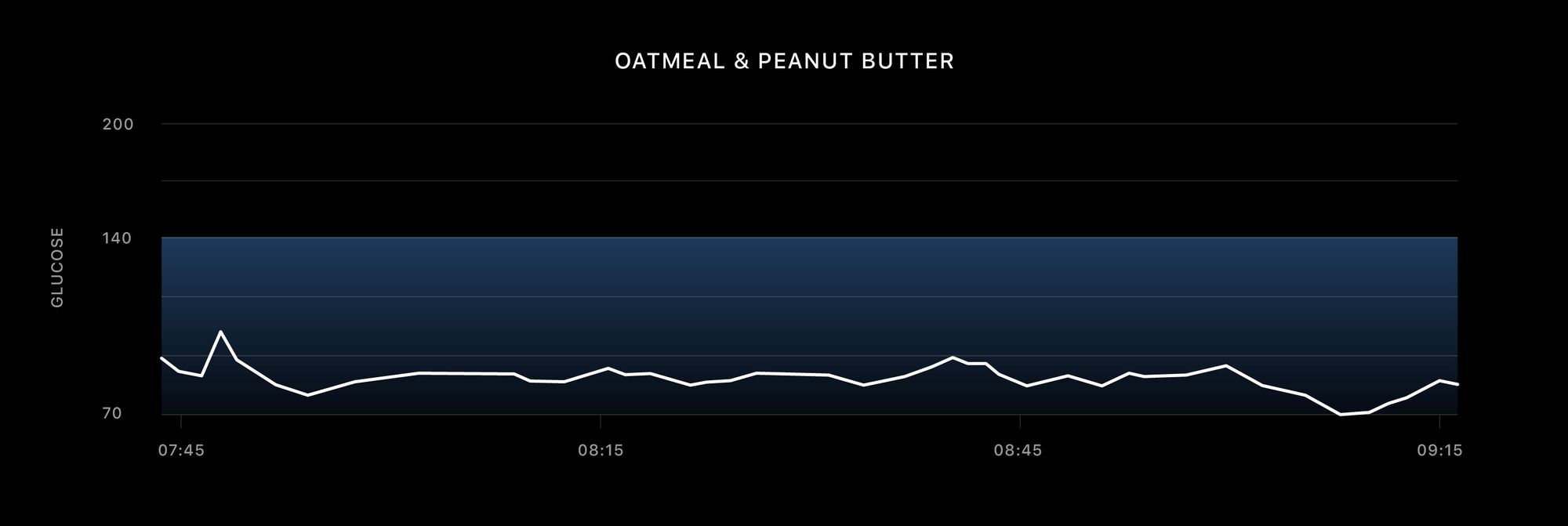
Brian’s response to his oatmeal at baseline was not particularly significant, perhaps either reflecting an individual difference or a situational difference for example high levels of recent physical activity (both could be driving insulin sensitivity). As a result, his trials to stabilize things further are not particularly impressive given he saw little perturbation at baseline. Perhaps the blueberries could be said to have added enough carbohydrate that he then had a minor rebound below baseline though this is minor if at all significant. The impact of the peanut butter is to stabilize his glucose further, in fact so much so that his stability measure is only 4, which is almost unheard of.
Kristina (Exercise Physiologist)
Kristina too had the advantage of being part of the science team and having a head start on how to turn a potential rush into a rise.
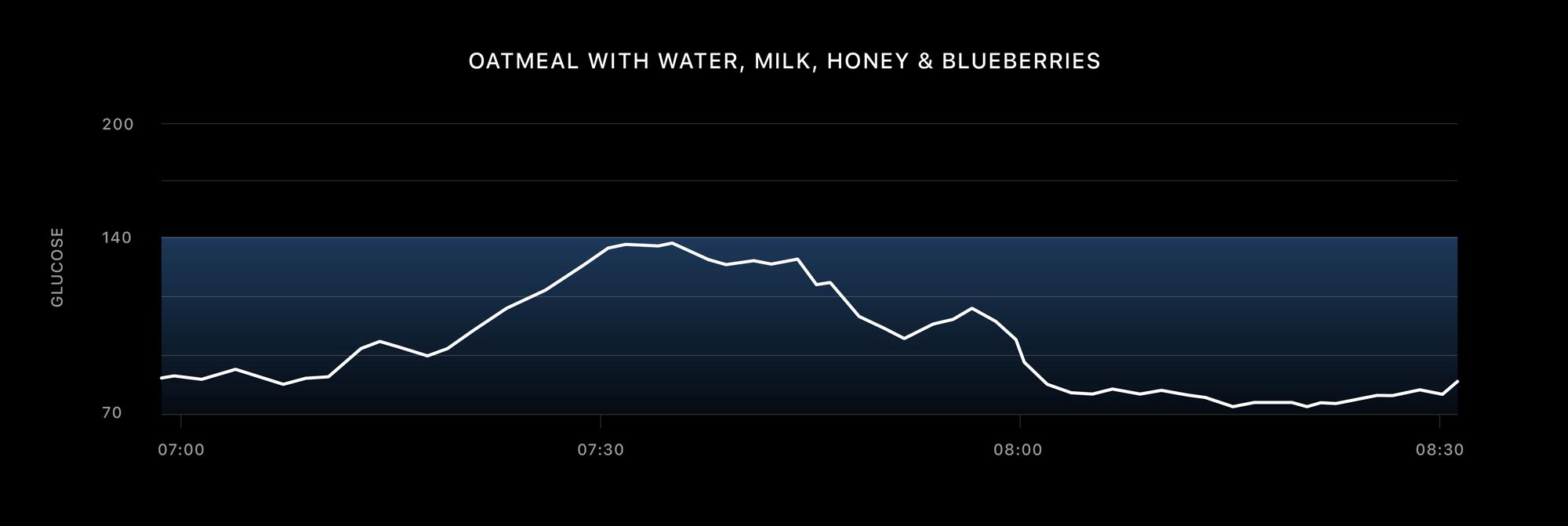
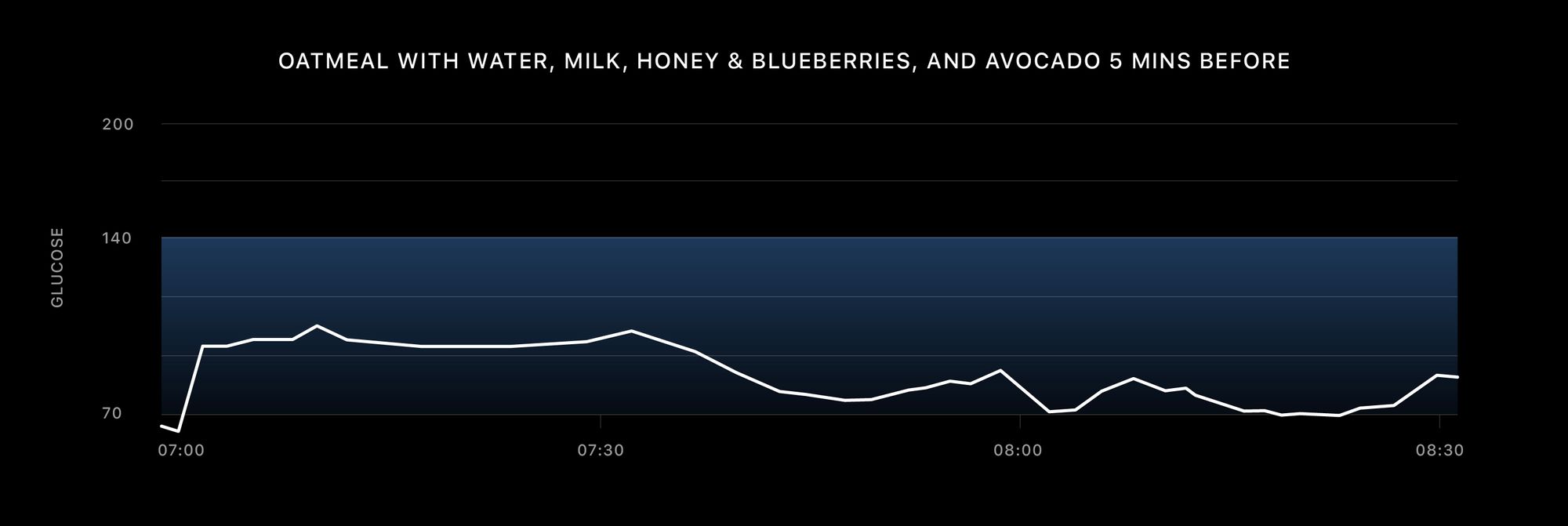
Whilst neither of these two glucose responses is particularly extreme (the reason is hard to be sure of), the impact of the added fat and fiber from the avocado is clear on Kristina's glucose.
Jack (Social and Community Manager)
Jack's initial response to his oatmeal is probably the most 'textbook' of all the ones in this article.
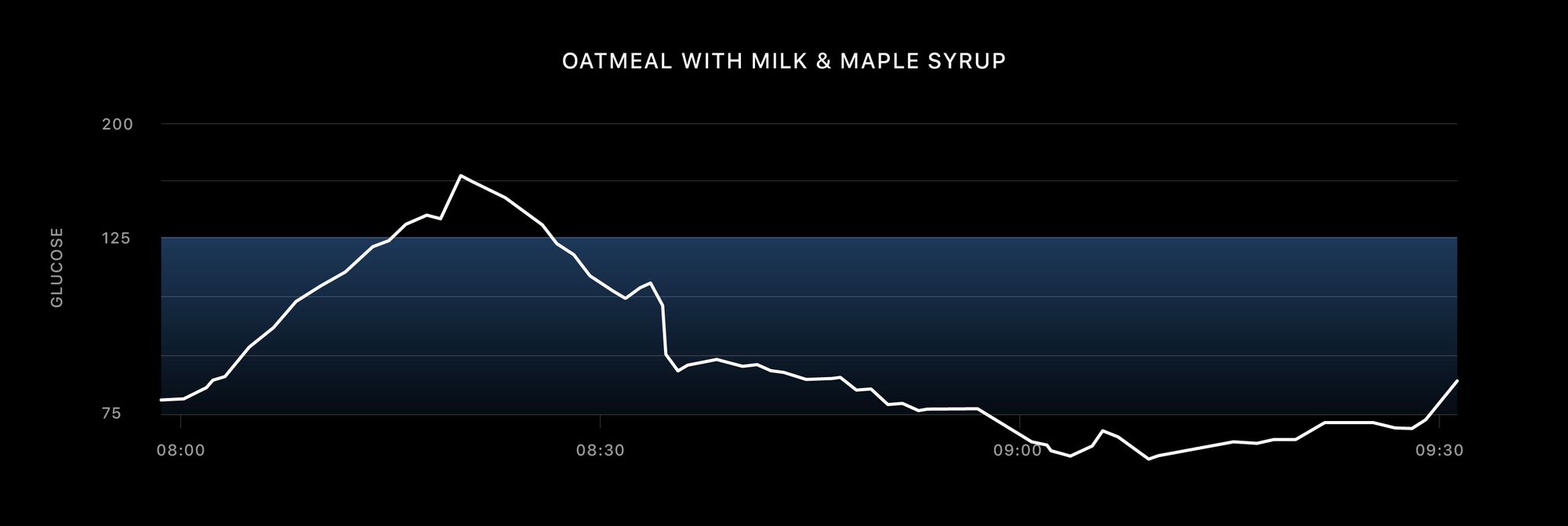
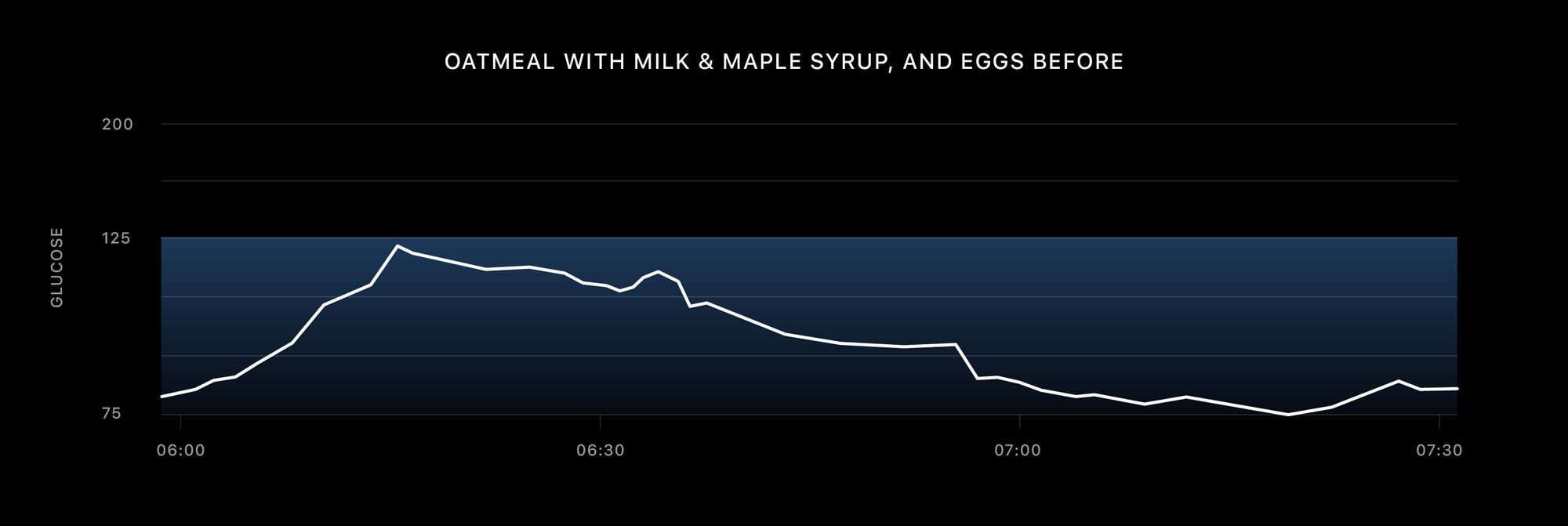
Interestingly here, Jack both avoids the higher peak, but probably more importantly for how he feels, he avoids a period of rebound hypoglycemia.
Christian (Creative Director / Video + Motion Design)
Christian varied his recipe up quite a bit between days. Whilst it is always risky to speculate cause and effect based on single ingredients in a mixed meal and acknowledging the limitations of experiments such as this there are some learnings to take.

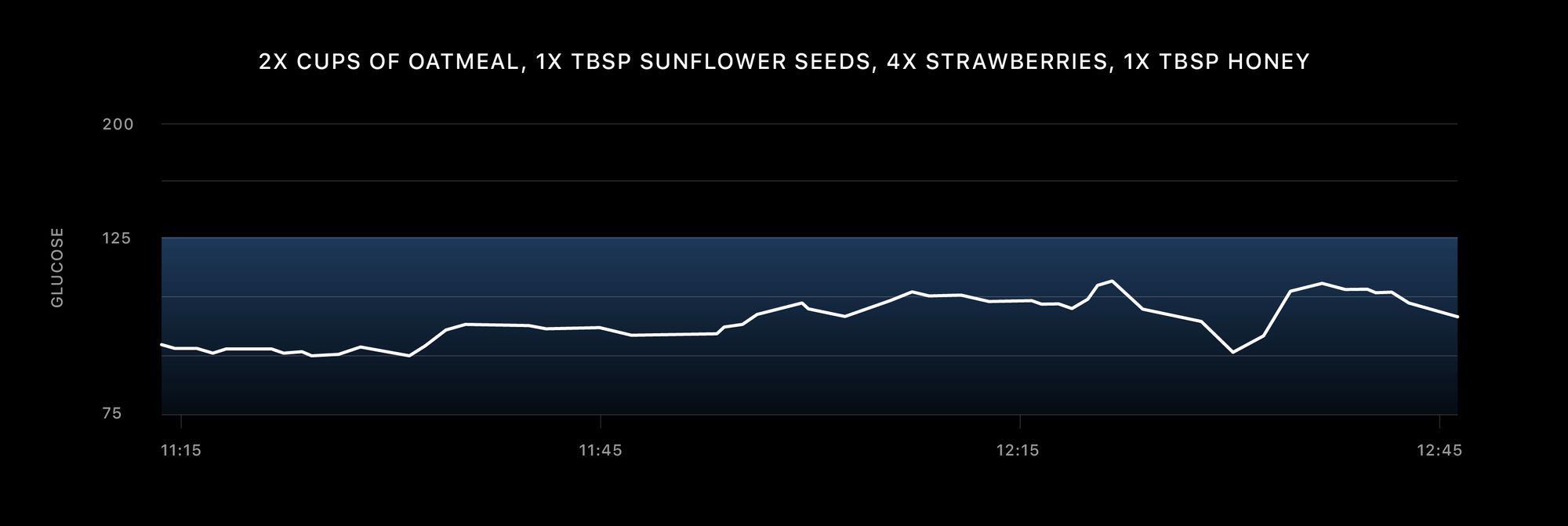
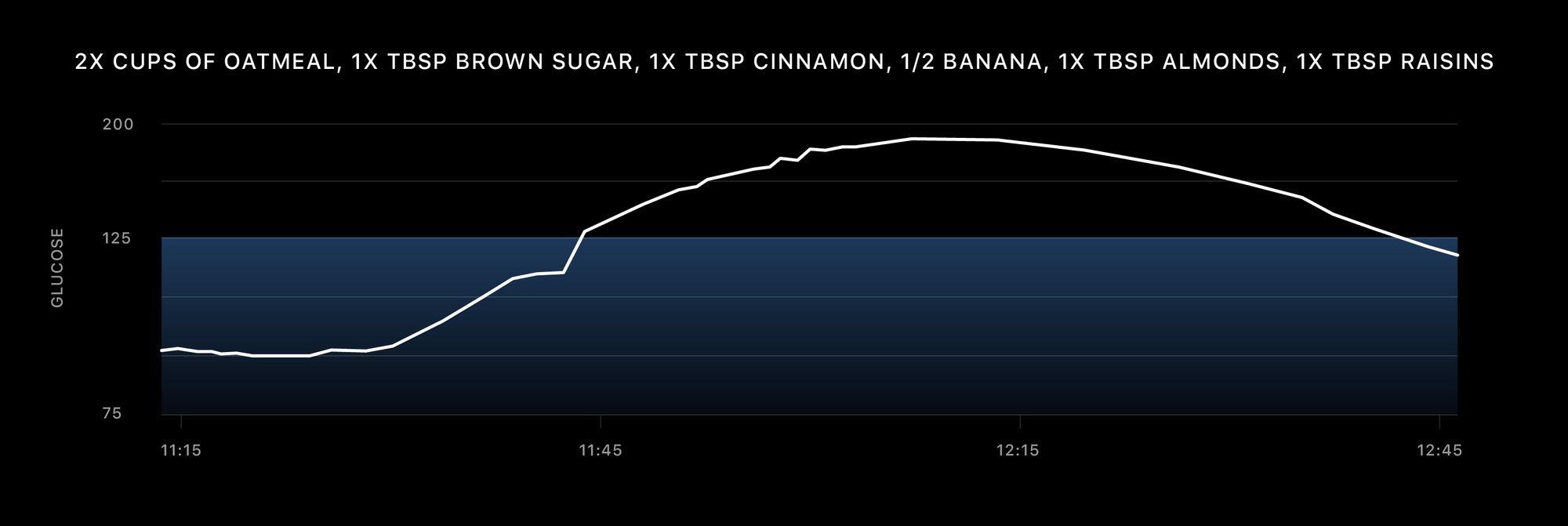
The summation of these recipes shows the impact of adding sweeteners high in sugar; sugar itself and honey respectively. Similarly, it shows the impact of dried fruit; which, whilst containing some fiber, has a high sugar content with low water in comparison to non-dried fruit. Adding cinnamon and nuts (fat, protein and fiber) usually helps to limit glucose rushes but these factors are always balanced against carbohydrate and sugar content.
A note on bananas; in our experience talking to users, there seems to be significant differences between individuals in their glycemic response to bananas and apples. These two fruits seem to have the greatest variability in their impact on people’s glucose response with some people having minimal response to either or both, and others having a significant response to either or both.
Bobby (Program Manager ~ Elite Athletes & Coaches)
Bobby's fairly prolong initial response may well be as a result of some of the fiber in the added pecan and cranberry mix. In a similar way to Jared's eggs, this may have lowered the peak of his glucose, but increased the area under the curve to a degree by prolonging the increase in glucose.

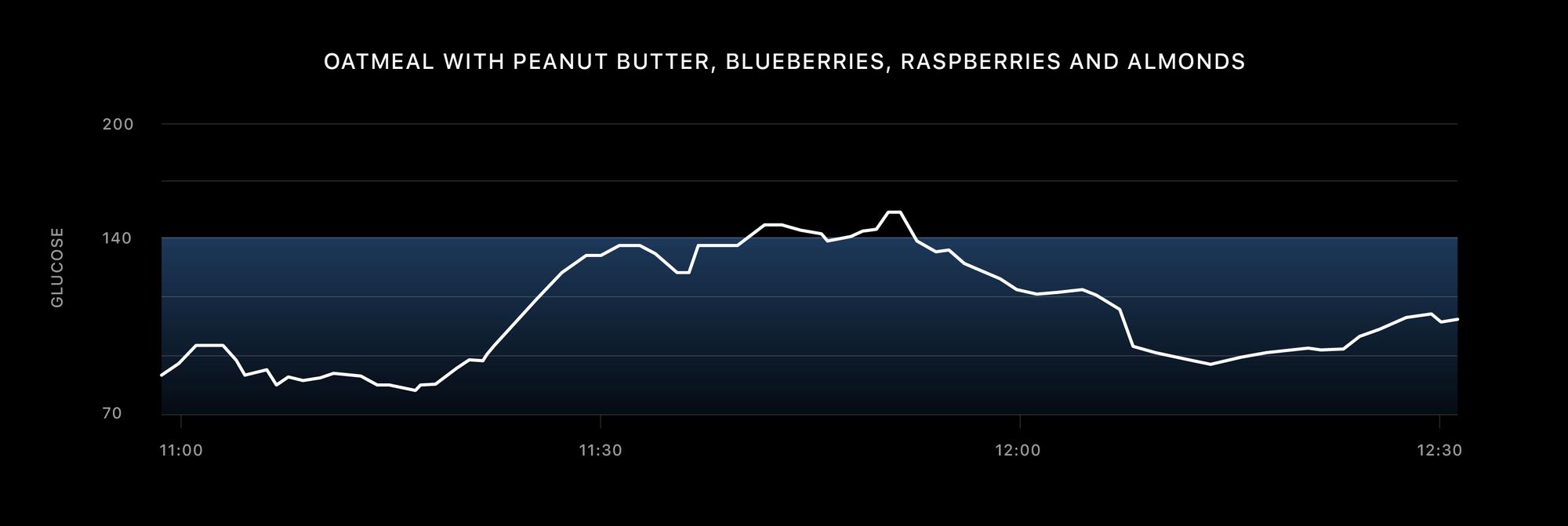
Bobby’s strategy of adding nuts and low sugar fruit is a very classic one to help limit glucose increases. Generally the fiber from the berries is more impactful than any amount of sugar they add whilst the almonds add fat, fiber and protein to further stabilize things. The peanut butter further adds some fat and protein (and only minimal ~10% carbohydrates).
By now, the value of self experimentation using the established scientific literature and understanding as a starting point should be apparent. It is similarly crucial to take note of how you feel and perform, not just glycemic response when adjusting recipes. Hopefully the above experiments run by our team give both indication of how best to run experiments in a similar situation and some ways in which you may be able to tweak your oatmeal recipe (or other recipes) to stabilize glucose with them.
